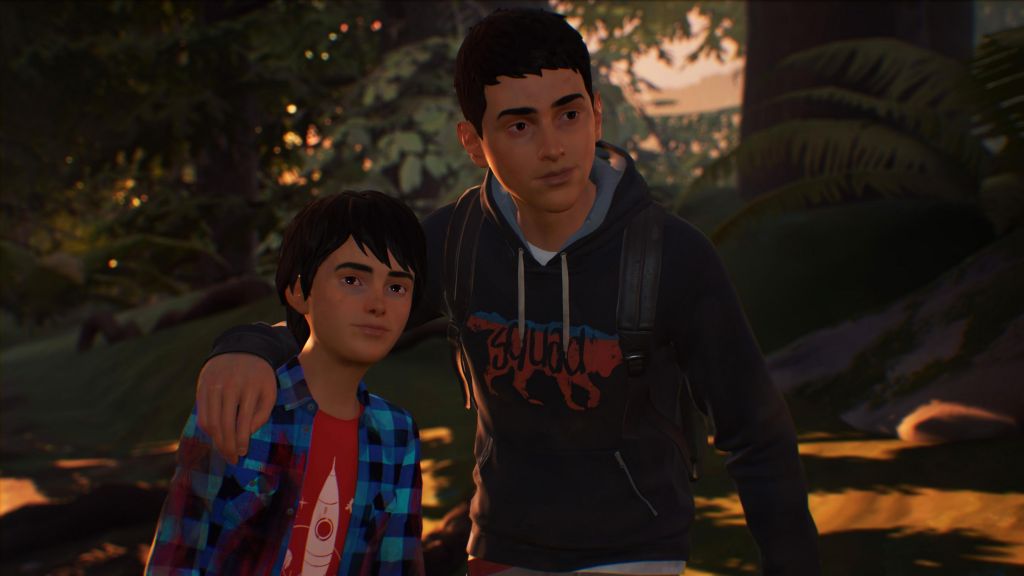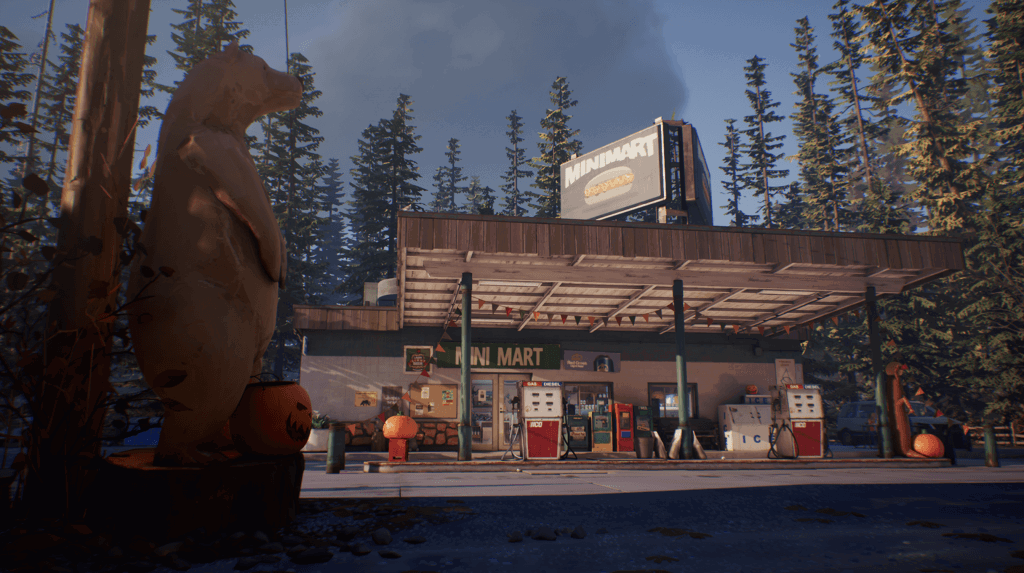
I can’t say I was all that excited when Life is Strange 2 was announced. The book was closed on Max and Chloe’s story, and I was unsure how a sequel would manage to capture the same magic as the first. After all, the only connecting thread between the games seemed to be “teens with superpowers”. Unsurprisingly, Life is Strange 2 follows a completely new set of characters in a new setting, and it makes no major story connections to the first game. Despite these things, it manages to feel incredibly familiar, and it feels good. I’ll try to keep it light on story spoilers, but I will say that if you liked the first Life is Strange, it’s a pretty safe bet you’ll like this one too.
Game Name: Life is Strange 2
Platform(s): PlayStation 4, Xbox One, Steam
Publisher(s): Square Enix
Developer(s): Dontnod Entertainment
Release Date: September 27, 2018
Price: $7.99 for the first episode, $39.99 for the complete season
In Life is Strange 2, you play as Sean Diaz, a 17-year-old, Mexican-American high school student living in Seattle with his younger brother Daniel and his single father. The story begins with Sean and his best friend Lyla preparing for a party, where his biggest concerns are getting caught with weed and if he should take a girl home after the party. We get maybe less than 30 minutes of Sean’s home life before things really go south, but in that brief time it’s clear that life is good – Sean has a loving family, good friends, and a future to look forward to. Sadly, this time spent at home enjoying youth is brief. After a terrible accident, Sean must leave with his brother quickly to trek through the woods of Washington.
Taking place in October of 2016, the game makes several references to the presidential election and the divisive political climate in America. Players can open up Sean’s phone and read impressively detailed text logs between Sean and other characters, many of which discuss the election, all but calling out the candidates by names. The period is important to the game’s overarching message – while Sean and Daniel aren’t faced with the same “end of the world” conspiracy that Max Caulfield was grappling with in the first game, they do encounter more than a few racial injustices on their journey. I will say that the racism and anti-Hispanic sentiments did feel a bit heavy-handed at times. A few of the people the brothers meet feel almost cartoonishly evil in their racism, but it isn’t too far removed from reality to be unbelievable. While it isn’t always subtle, the message is effective. Sean and Daniel are forced to grow up fast in a world that isn’t always welcoming, but they do meet some kind hearts along the way. Politics aside, Life is Strange 2 is a story about brotherhood. As Sean, players have to make choices that not only affect him, but his younger brother as well. There’s even a break-down after the credits where players are shown how each choice affected Sean, and then how it affected Daniel.
In terms of gameplay, Life is Strange 2 is not a great departure from the first game. There are several key choice-making moments spread out in the episode, but you spend most of the time trekking through new environments and interacting with objects. Sean has similar voice-overs and quiet moments of reflection as Max did, but there’s also a fair amount of banter between him and Daniel. And instead of photography, Daniel can pull out his sketchbook and draw his surroundings. These segments are admittedly dull, as the game has you toggling the joystick in random directions to sketch out a pre-determined image. It’s forgivable, as they aren’t really key gameplay moments.
Of course in the first Life is Strange, Max Caulfield could rewind time in short intervals. Her power allowed players to change their decisions immediately after making them, giving players a bit of flexibility in the choice-based gameplay. However, in Life is Strange 2, Sean is not the one with powers, and time travel is out of the picture. The removal of controllable superpowers – especially one as thematically appropriate as time travel in a choice-based adventure game – might be a bit of a loss for Life is Strange 2‘s gameplay. Being that these episodic, choice-based games are already light on gameplay, every mechanic is appreciated. This is only a minor complaint, and I can’t fault Dontnod for not trying to re-hash the same story and mechanics in this sequel. Furthermore, this is only episode one, and I wouldn’t be surprised if they have a few cards to play in incorporating superpowers into gameplay.
Graphics have also improved this time around. We still get the same warm, dreamy, and almost painting-like art style that made the first game so unique, but graphics are fine-tuned and lip-syncing has noticeably improved, something that the first game struggled with. I will also say that the dialogue feels a lot less like 30-year-olds trying to impersonate the way that American teenagers talk. Yes, there are a few lines that are bizarrely written, but nothing too distracting.
All in all, this is an incredibly worthy sequel to Dontnod’s original and heartfelt series. Sean and Daniel are likable protagonists, their relationship is sweet and convincing, and their misfortunes are not too hard to imagine in the present day. While making this departure with new characters and setting, the French developer has simultaneously solidified what Life is Strange is – it’s about building meaningful relationships in youth, and maybe even Pacific Northwest settings and soft indie music. While the struggle of the characters is more individualized, players will feel the gravity of the situation and look forward to finding out what happens in episode 2.
Want more game reviews from The Outerhaven? Consider the following:
- Forza Horizon 4 – Simply Perfection (PC)
- Xenoblade Chronicles 2: Torna ~ The Golden Country (Switch)
- Megaman 11 – The Return of the Blue Bomber (PS4)
Summary
Life is Strange 2 is entirely separate from the it’s predecessor in terms of story and characters, yet it manages to capture the same atmosphere that makes the series so special. It isn’t always subtle in its message, but the game is a powerful story about injustice and family all the same.
Pros
- Compelling story
- Likeable characters
- Charming artstyle
Cons
- Writing is sometimes heavy-handed
- Fewer interesting gameplay mechanics than the first





